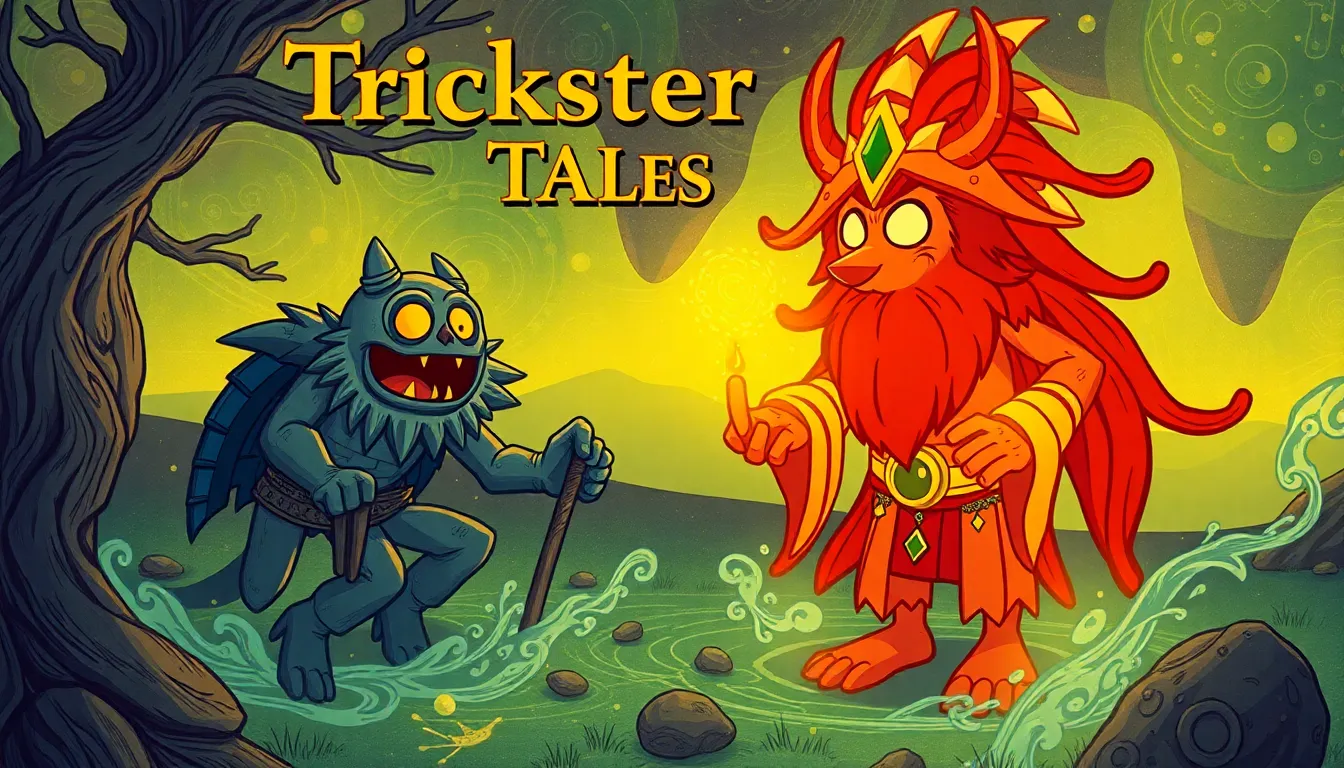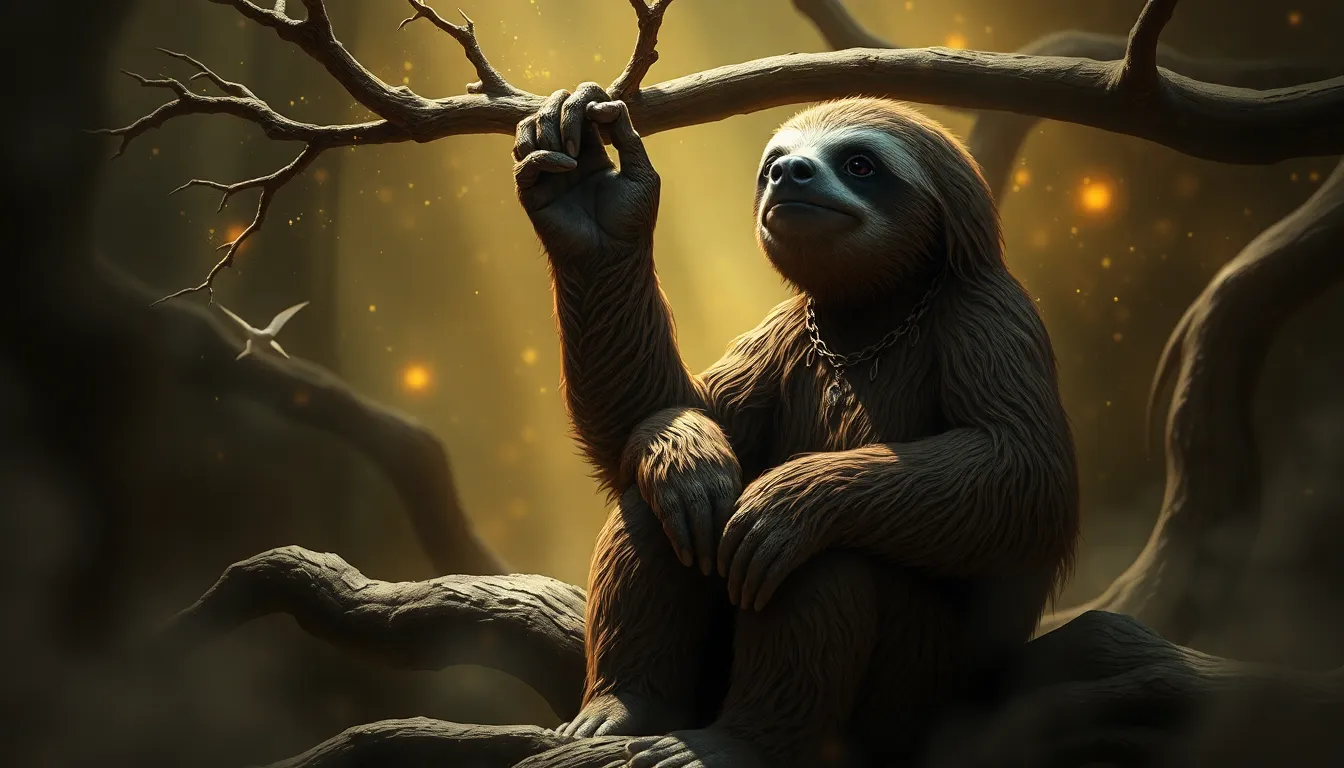Trickster Tales: The Intersection of Humor and Wisdom
I. Introduction to Trickster Tales
Trickster tales are narratives featuring cunning characters who use their wit and cleverness to outsmart others. These tales often serve as a reflection of society’s values, challenges, and contradictions. Historically, trickster tales have held significant places in the folklore of various cultures, from the Anansi stories of West Africa to the Native American tales of Coyote.
The dual role of humor and wisdom in these stories is vital. While tricksters often engage in mischievous or humorous acts, the underlying messages typically convey profound truths about human nature and societal norms. This interplay between humor and wisdom is what makes trickster tales resonate across generations and cultures.
II. The Archetype of the Trickster
Trickster figures embody a wide range of characteristics, making them complex and multifaceted. They are often characterized by:
- Intelligence and cunning
- A penchant for mischief
- The ability to change forms or roles
- A disregard for conventional rules and norms
Across cultures, common traits emerge. For instance, tricksters often challenge authority and social norms, serving as catalysts for change and reflection. Famous trickster characters include:
- Anansi the Spider (African folklore)
- Coyote (Native American folklore)
- Br’er Rabbit (African American folklore)
- Loki (Norse mythology)
III. Humor as a Tool for Insight
Humor serves as a powerful tool in trickster tales, disarming audiences and engaging them in critical reflection. Through laughter, listeners are more open to examining serious issues. The role of satire and parody allows tricksters to critique societal norms and behaviors without direct confrontation.
Examples abound where humor leads to critical thinking. For instance, in many Anansi stories, the character’s humorous antics reveal the foolishness of greed or pride, prompting audiences to reflect on their own behavior.
IV. Wisdom Embedded in Folklore
While trickster tales are often humorous, they also carry moral lessons and ethical dilemmas. These stories educate audiences about the complexities of life, often using humor to address serious topics. The educational value of storytelling is significant, as these tales impart wisdom that is relevant across generations.
Case studies of specific tales reveal their teachings. For example, the story of Br’er Rabbit and the tar-baby illustrates the consequences of underestimating others and the importance of cleverness over brute strength.
V. Cross-Cultural Perspectives on Trickster Tales
Trickster tales are found worldwide, with notable examples from African, Native American, and Asian cultures. A comparison reveals both similarities and differences in themes and morals:
- African Trickster Tales: Often feature animals, emphasizing community and the consequences of one’s actions.
- Native American Trickster Tales: Frequently highlight the balance between nature and human behavior, with tricksters serving as both creators and destroyers.
- Asian Trickster Tales: Often incorporate elements of wisdom and philosophy, reflecting cultural values and societal norms.
The universality of the trickster archetype demonstrates a shared human experience, where humor and wisdom intersect across diverse cultures.
VI. The Role of Trickster Tales in Modern Society
Contemporary retellings and adaptations of trickster tales can be found in literature, film, and other media. Characters inspired by traditional tricksters appear in modern stories, often reflecting contemporary issues and challenges. For instance, films like “The Lion King” feature trickster elements through characters like Timon and Pumbaa, who use humor to navigate difficult situations.
The relevance of trickster wisdom today lies in its ability to challenge societal norms and provoke thought. In a world filled with complexities and contradictions, these tales encourage critical thinking and resilience.
VII. Psychological Insights into Trickster Tales
The trickster serves as a psychological archetype, embodying the duality of chaos and order. This interplay is essential for personal development, as embracing the trickster within can lead to greater creativity and problem-solving abilities.
Furthermore, humor plays a crucial role in mental health and coping strategies. By allowing individuals to laugh at their challenges, trickster tales provide a means of processing difficult emotions and situations.
VIII. The Craft of Storytelling in Trickster Tales
Storytellers employ various techniques to convey humor and wisdom in trickster tales. Key elements include:
- Engaging narrative structure that builds tension and release
- Timing and delivery that enhance comedic elements
- The use of vivid imagery and relatable characters
The contrast between oral traditions and written forms of trickster tales further enriches storytelling practices, with oral traditions emphasizing community engagement and the dynamic nature of the tales.
IX. Criticism and Controversies Surrounding Trickster Tales
Despite their significance, trickster tales can be subject to misinterpretation. Potential misinterpretations of humor and lessons can lead to skewed understandings of cultural values. Additionally, issues of cultural appropriation and authenticity arise in retellings, emphasizing the need for sensitivity and respect in storytelling.
Balancing humor with sensitivity is crucial, as humor can sometimes overshadow serious messages or reinforce stereotypes.
X. Conclusion: The Enduring Legacy of Trickster Tales
Trickster tales have a profound impact on culture, serving as vessels of humor and wisdom that resonate through time. The importance of preserving and sharing these stories cannot be overstated, as they provide insight into human nature and societal values.
Readers are encouraged to explore and create their own trickster tales, continuing the legacy of these timeless narratives that remind us of the power of laughter and the wisdom it can impart.



